In this tutorial, you will know how to upload a zip file and unzip the file to Google Colab for doing training purpose of SRCNN model. We use Google Colab Jupyter Notebook (IPython) to train the model.
Step 1: Download image dataset that you prefer to use (e.g. yang91.zip dataset is used)
Step 2: Go to Google Colab address (https://colab.research.google.com) and sign in your Gmail account to access Google Colab.
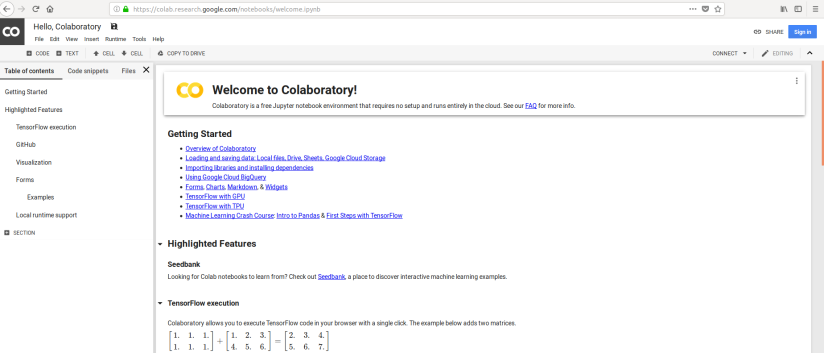
After sign in, you will get an interface like below:
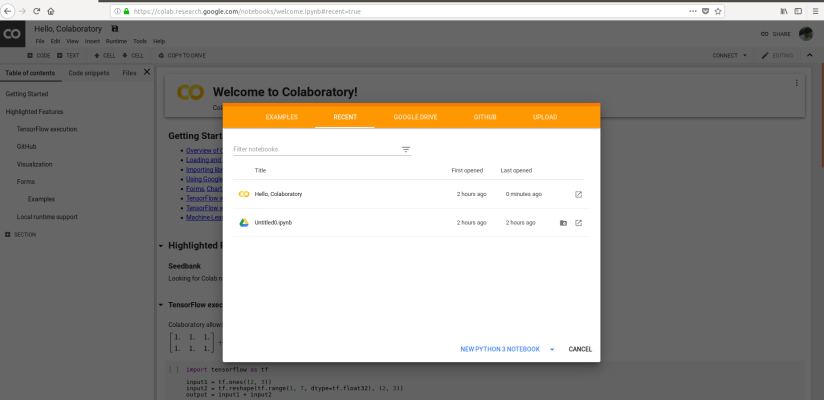
Then, click on NEW PYTHON3 NOTEBOOK

Select your runtime environment (e.g. None, GPU or TPU)
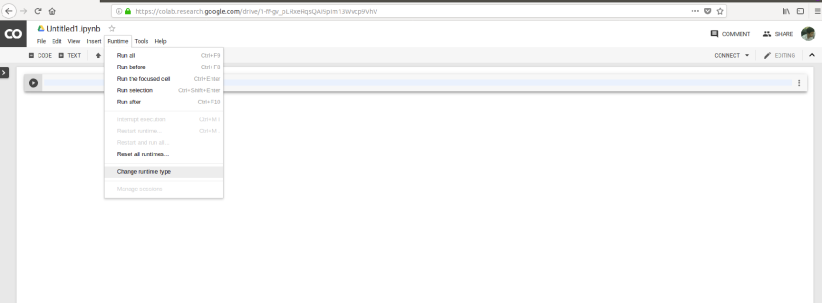
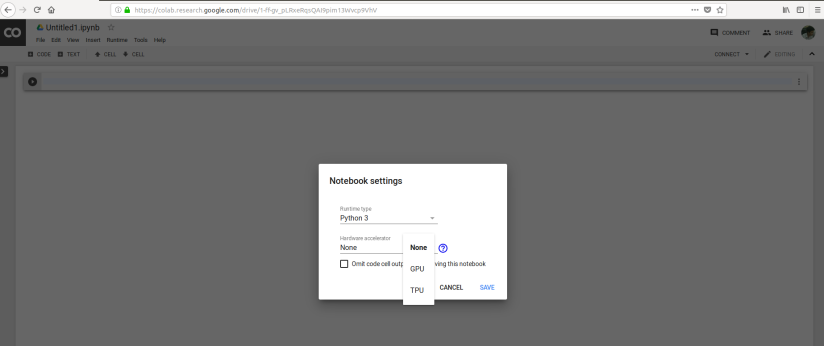
Step 3: Upload zip file and unzip into Google Colab (Write code below in Google Colab Jupyter Notebook)
# SRCNN Test in Google Colab # Upload zip file from google.colab import files rc = list(files.upload().values())[0] !unzip yang91.zip
Run code above in Google Colab, then browse your zip file directory as the figure below:
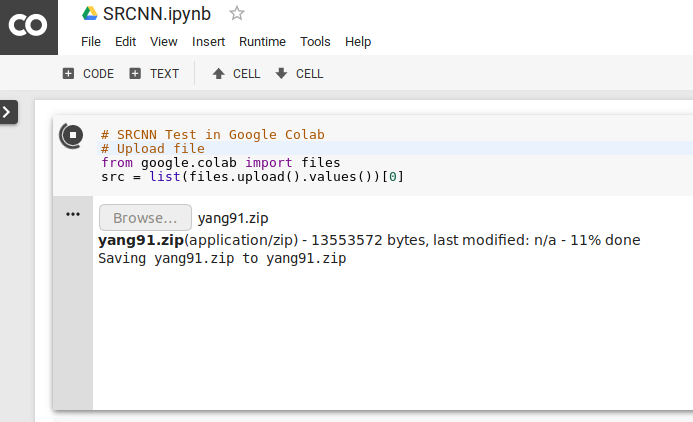
Step 4: Code
# Import libraries
import keras.backend as K
from keras.models import Sequential, Model
from keras.layers import Dense, Conv2D, Activation, Input
from keras import optimizers
from keras.models import load_model
import numpy as np
import scipy.misc
import scipy.ndimage
import cv2
import math
import glob
import matplotlib.pyplot as plt
# Build SRCNN model
img_shape = (32,32,1)
input_img = Input(shape=(img_shape))
C1 = Conv2D(64,(9,9),padding='SAME',name='CONV1')(input_img)
A1 = Activation('relu', name='act1')(C1)
C2 = Conv2D(32,(1,1),padding='SAME',name='CONV2')(A1)
A2 = Activation('relu', name='act2')(C2)
C3 = Conv2D(1,(5,5),padding='SAME',name='CONV3')(A2)
A3 = Activation('relu', name='act3')(C3)
model = Model(input_img, A3)
opt = optimizers.Adam(lr=0.0003)
model.compile(optimizer=opt,loss='mean_squared_error')
model.summary()
# Create function to generate High Resolution from interpolation technique
# to pass in SRCNN model
def modcrop(image, scale=2):
if len(image.shape) == 3:
h, w, _ = image.shape
h = h - np.mod(h, scale)
w = w - np.mod(w, scale)
image = image[0:h, 0:w, :]
else:
h, w = image.shape
h = h - np.mod(h, scale)
w = w - np.mod(w, scale)
image = image[0:h, 0:w]
return image
def create_LR(image,scale):
label_ = modcrop(image, scale)
# Must be normalized
label_ = label_ / 255.
input_ = scipy.ndimage.interpolation.zoom(label_, (1./scale), prefilter=False)
input_ = scipy.ndimage.interpolation.zoom(input_, (scale/1.), prefilter=False)
return input_
# Call data path in Google Colab and read all files
path = 'yang91/'
files_y = glob.glob(path + '*.bmp')
# Split data into 2 parts, 85 images for training, the rest is for validation
trainfiles = files_y[:85]
valfiles = files_y[85:]
# Initial parameters setting
img_size = 32
stride = 16
scale = 4
X_train = []
Y_train = []
X_val = []
Y_val = []
# Extract patch image for training
for file_y in trainfiles:
tmp_y = scipy.misc.imread(file_y,flatten=True, mode='YCbCr').astype(np.float)
tmp_X = create_LR(tmp_y,scale)
h,w = tmp_y.shape
for x in range(0, h-img_size+1, stride):
for y in range(0, w-img_size+1, stride):
sub_input = tmp_X[x:x+img_size, y:y+img_size].reshape(img_size,img_size,1)
sub_label = tmp_y[x:x+img_size, y:y+img_size].reshape(img_size,img_size,1)
X_train.append(sub_input)
Y_train.append(sub_label)
# Extract patch image for validation
for file_y in valfiles:
tmp_y = scipy.misc.imread(file_y,flatten=True, mode='YCbCr').astype(np.float)
tmp_X = create_LR(tmp_y,scale)
h,w = tmp_y.shape
for x in range(0, h-img_size+1, stride):
for y in range(0, w-img_size+1, stride):
sub_input = tmp_X[x:x+img_size, y:y+img_size].reshape(img_size,img_size,1) # [32 x 32]
sub_label = tmp_y[x:x+img_size, y:y+img_size].reshape(img_size,img_size,1) # [32 x 32]
X_val.append(sub_input)
Y_val.append(sub_label)
# Convert list to array
X_train = np.array(X_train)
Y_train = np.array(Y_train)
X_val = np.array(X_val)
Y_val = np.array(Y_val)
# Start training the model
model.fit(X_train, Y_train, batch_size = 32, epochs = 1, validation_data=(X_val, Y_val))
# Save the model
model.save('scale4.h5')
# Download model from Google colab to your drive
from google.colab import files
files.download('scale4.h5')
Congratulation, you succeed it!
